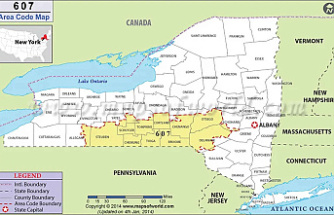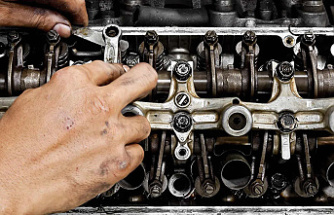In 1994, Baltimore launched a controversial program to provide drug addicts with a clean needle for each dirty one they turned in. The point was not to accommodate heroin use — which it indirectly did, of course — but to reduce the spread of AIDS through the shared use of dirty needles. Such an approach was banned from federal funding at the time, but local public health authorities pushed ahead anyway, and it was effective, saving potentially thousands of lives.
The latest report from the Johns Hopkins Bloomberg School of Public Health recommending the city open on its east and west sides so-called "safe-drug consumption spaces" is bound to be even more controversial than the needle-exchange program of 23 years ago. But the logic behind it is unassailable: Baltimore is beset by an opiod overdose crisis that is reaping lives, young and middle-aged, men and women, black and white, like a sharp scythe through wheat. Traditional methods of combating drug use and even encouraging drug treatment have proven woefully insufficient. There were 481 fatal overdoses during the first nine months of last year, a nearly two-thirds increase from 2015.
That's not to suggest such facilities should open tomorrow without regard to the potential consequences, both intended and unintended; it's to point out that the concept should not be rejected out of hand. Because make no mistake, there will be no shortage of naysayers who will see safe spaces only as a capitulation to criminals and an accommodation to self-destructive behavior. But such a myopic view of opioids ignores the severity of the public health threat — an attitude that has begun to change, incidentally, as the overdose epidemic continues to spread far beyond cities like Baltimore to plague suburban and rural communities.
From January to September of last year, Maryland experienced nearly 1,500 overdose deaths. To its credit, the Hogan administration has been working actively on the issue, including expanding access to the anti-overdose drug naloxone and training more individuals to use it. But safe drug spaces are not incompatible with those efforts. They could prove important referral centers for drug treatment and an opportunity for addicts to find many forms of public help for themselves and their families. What some may perceive as an accommodation to drug use might prove one of the most effective ways to draw users into treatment and to discourage criminal behavior.
Baltimore Health Commissioner Leana Wena has expressed doubts about pursuing an approach that the federal government steadfastly bans and which could easily result in the city losing precious federal funding for public health programs. We share that concern. But again, recalling the needle-exchange program, Baltimore pursued that approach (at the time the largest effort of its kind in the nation) even when the federal government refused to help pay for it. AIDS had become the top killer of Baltimore men and women between the ages of 25 and 44, much as overdoses have now outstripped homicides in the city.
The needle exchange was pilloried by critics like Mike Gimbel, who was then head of Baltimore County's Office of Substance Abuse, and who is now a vocal opponent of the safe spaces approach. "What's next?" Mr. Gimbel asked a Sun reporter in 1995. "Is the next scenario going to be, maybe we ought to make sure we give them clean heroin? ... I really believe we should be putting this energy into ... programs that aren't giving a mixed message."
Yet what the Bloomberg report points out is that cities like Vancouver that have created safe spaces are experiencing a decrease in overdose deaths. And in Vancouver, it's also resulted in a substantial increase in treatment referrals. Both those outcomes are exactly what Baltimore so desperately needs. Can we afford to ignore that success out of some misguided desire to avoid sanctioning heroin use? Should that even be a moral quandary if safe spaces are proven to be the most effective way to save lives and reduce drug use and addiction?
Police in Baltimore will now send some people they stop for minor drug and prostitution offenses to treatment programs rather than jail under a three-year pilot program developed in partnership with local nonprofit groups.
The Law Enforcement Assisted Diversion program, or LEAD, is based on a treatment...
Police in Baltimore will now send some people they stop for minor drug and prostitution offenses to treatment programs rather than jail under a three-year pilot program developed in partnership with local nonprofit groups.
The Law Enforcement Assisted Diversion program, or LEAD, is based on a treatment...
The Bloomberg report, financed and published by the Abell Foundation, is certain to stir strong feelings. It ought to do more than that. It deserves to be viewed as the starting point of a serious exploration of a relatively new and unconventional approach to saving lives. There are still questions to be answered — for example, how to develop such facilities in a way that is accepted by the surrounding communities — but Baltimore simply can't afford to ignore a promising public health strategy simply because it may prove politically unpopular.
Our editors found this article on this site using Google and regenerated it for our readers.












